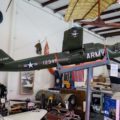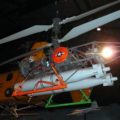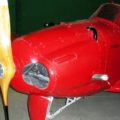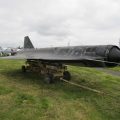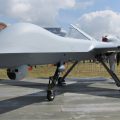
GAF Pika | |
|---|---|
| Paese | Australia |
| Ruolo | Drone bersaglio |
| Primo volo | 28 August 1952 |
| Costruito | 517 |
Le GAF Jindivik is a radio-controlled target drone produced by the Australian Government Aircraft Factories (GAF). The name is from an Aboriginal Australian word meaning “the hunted one”. Two manually-controlled prototypes, were built as the GAF Pika (Project as a proof of concept to test the aerodynamics, engine and radio control systems, serialled A92-1/2, ‘B-1/2’. The radio-controlled Jindivik was initially designated the Project B and received serials in the A93 series. Pika is an Aboriginal Australian word meaning flier
fonte: GAF Pika on Wikipedia
| GAF Pika | |
|---|---|
| Fotografo | Vladimir Jakubov |
| Localizzazione | Museo RAAF, Point Cook |
| Foto | 47 |
Kit correlati:
Trova kit su eBay:
Vedi anche:
Le GAF Pika was a piloted prototype of a radio-controlled target drone that was developed by the Australian Government Aircraft Factories (GAF) in the early 1950s. The Pika was used to test the aerodynamics, engine and radio control systems of the drone, which was later named Jindivik, an Aboriginal word meaning “the hunted one”. The Pika was powered by an Armstrong Siddeley Adder turbojet engine, which had a thrust of 500 kgf. The Pika had a wingspan of 5.79 m, a length of 7.49 m and a height of 1.92 m. It had a maximum speed of 756 km/h and a service ceiling of 9,754 m.
Two Pika prototypes were built and flown from Woomera airfield in South Australia. The first one, A93-1, made its maiden flight on 4 November 1950 and was destroyed in an accident in April 1951. The second one, A93-2, flew for the first time in April 1951 and had a longer nose and exhaust cone than the first one. It is currently preserved at the Museo RAAF at Point Cook, Victoria.
Visualizzazioni : 1043


